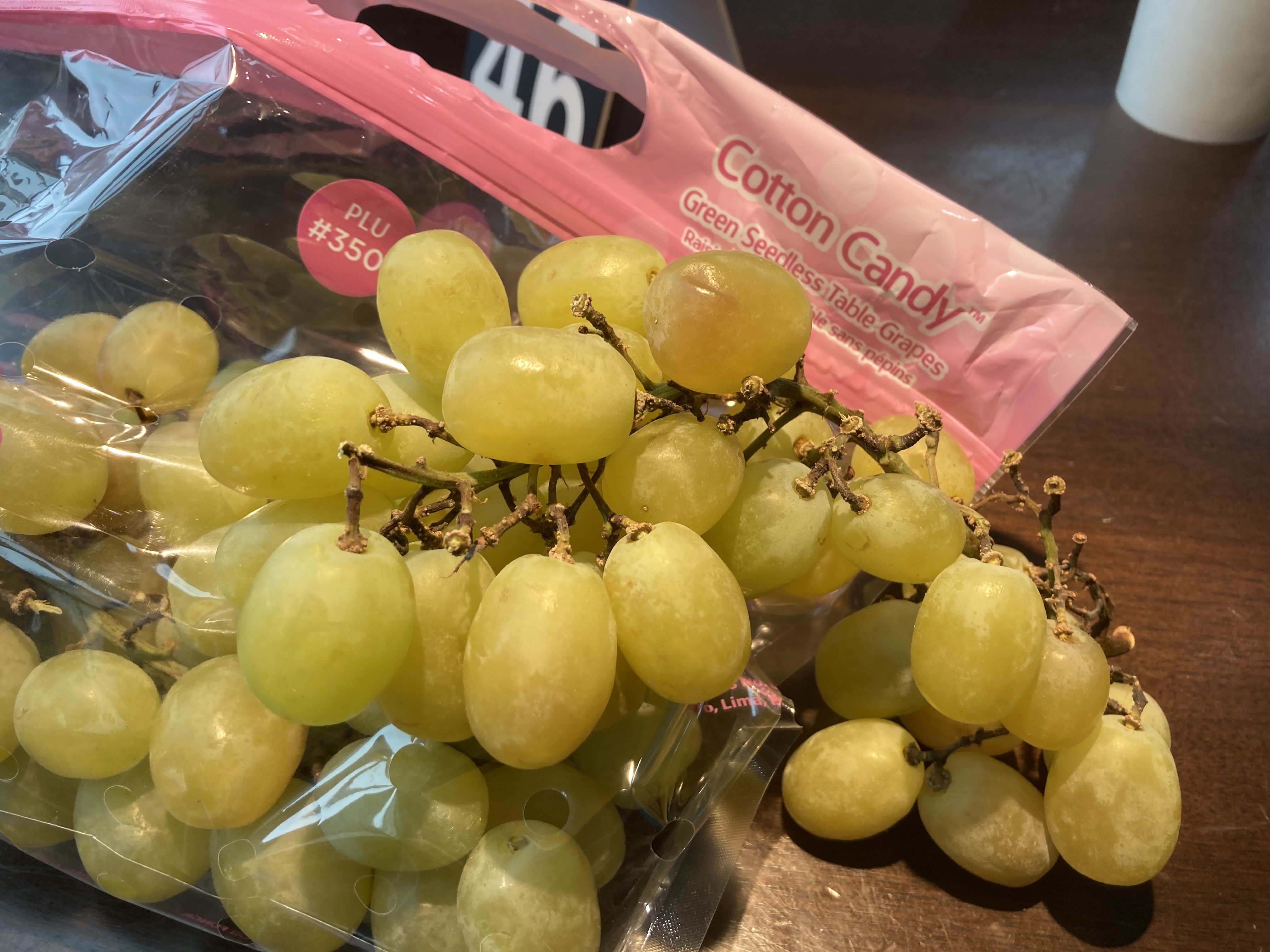Resource Library
Plant of the Week: Grape Cotton Candy
You never know what you will find when you travel. Last week a couple brothers and I traveled to Nebraska’s Platt River valley to spy on the migration of the sandhills cranes as they winged their way north to the Arctic. Food is never far from our minds so one day we found ourselves at an upscale hamburger joint partnered with an upscale grocery store. There I found something I’d been looking to try: Cotton Candy grapes.
Cotton Candy Grape owes its flavor and size to one of its Arkansas parents, an old Concord grape selection. Dr. Jim Moore (1931 – 2017), the founder of the University of Arkansas fruits breeding program in the 1960s, began working with grapes with the goal of creating table grapes that could be grown by Arkansas farmers. Over the years the program released at least eleven table grape selections that met with some commercial success but none achieved superstardom. Moore and his students worked with a number of small fruits during his career and is probably best remembered for his work with blackberries.
Only the best of the best is released from a breeding program. In order to choose the best, the breeder must carry along a number of sister lines for evaluation, but for some reason these don’t quite make the cut. In 2001, David Cain, one of the cofounders of International Fruit Genetics, sampled some of the also-rans from the UofA grape breeding program and was struck by the unique flavor of a Concord grape selection Moore had developed but never released. Dr. John Clark had taken over the breeding program after Moore’s retirement, so he and Cain signed a licensing agreement whereby Arkansas grape genetics could be used in Cain’s California breeding program.
A purple, thick-skinned Concord (think grape jelly) selection speckled with tiny seeds has little to recommend it for the billion-dollar table grape market, but Cain thought the flavor profile could make it a winner. Cane crossed the Concord seedling line with a number of seedless grape lines, producing thousands of seedlings. Seedless grape crossing can be done because the embryo starts to form after fertilization but, unless something is done, the embryo never matures into a viable seed.
The needed intervention is called “embryo rescue,” in which the developing embryo is surgically removed from the maturing grape and inserted into a sterile, nutrient-rich test tube where it grows to maturity. These seedlings are then grown in the field, evaluated and eventually selected. Cotton Candy was patented and trademarked in 2010 and the first limited sales occurred in 2013. At least two other specialty table grape selection from Cane’s work include Arkansas parents.
The goal of independent fruit breeders is to find the next big thing that will catch the attention of the consumer and serve as a healthy snack alternative to potato chips and candy bars. The green, sometimes tinged maroon, Cotton Candy grapes are large, crisp and seedless with 19 grams of sugar per 100 grams of berry. This is just a bit sweeter than the typical table grape but there is a complete lack of tartness, so the sweetness stands out.
Cotton Candy, by its large size and distinctive pink packaging, makes it stand out amongst its competitors. While older conventional table grapes such as Thompson Seedless often sell for less than $1 a pound, new niche grapes command as much as $5 per pound. Fruit breeders license their creations to growers who produce and market the fruit under the guidelines established by the patent and trademark owners. Originally Cotton Candy was grown in California and available in stores only in August and September but now growers are producing it in various South and Central American countries, so supply is no longer tied to our northern hemisphere season. The fruit I purchased for over $5 a pound was grown in Peru.
My impression? It was a big, crunchy grape and we quickly ate them all. But I never could really detect a cotton candy subtext, but the name and promise of a warm evening on the midway reeled me in.
For more information about horticulture or to see other Plant of the Week columns, visit Extension’s Website, www.uaex.uada.edu, or contact your county extension agent. The Cooperative Extension Service is part of the U of A Division of Agriculture.
